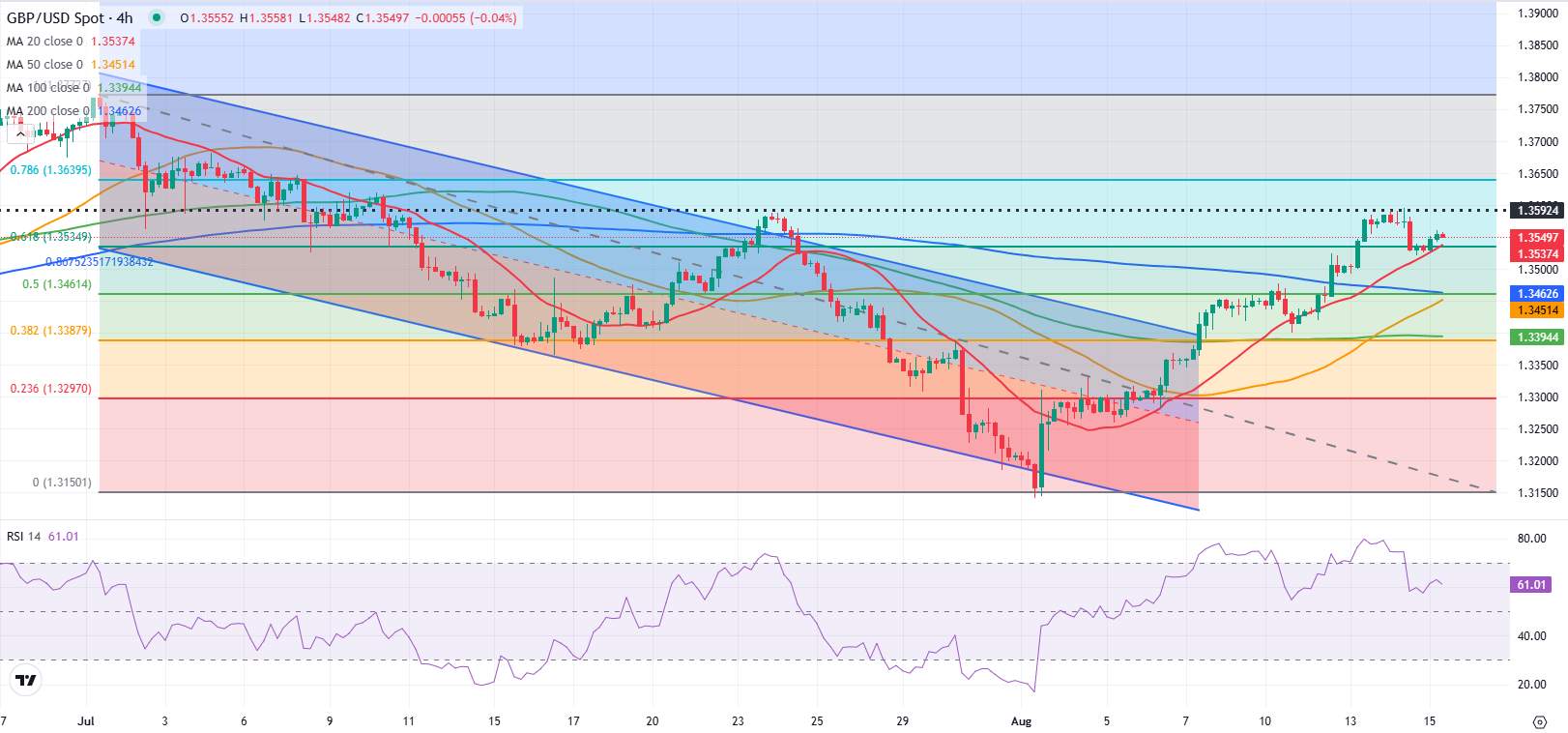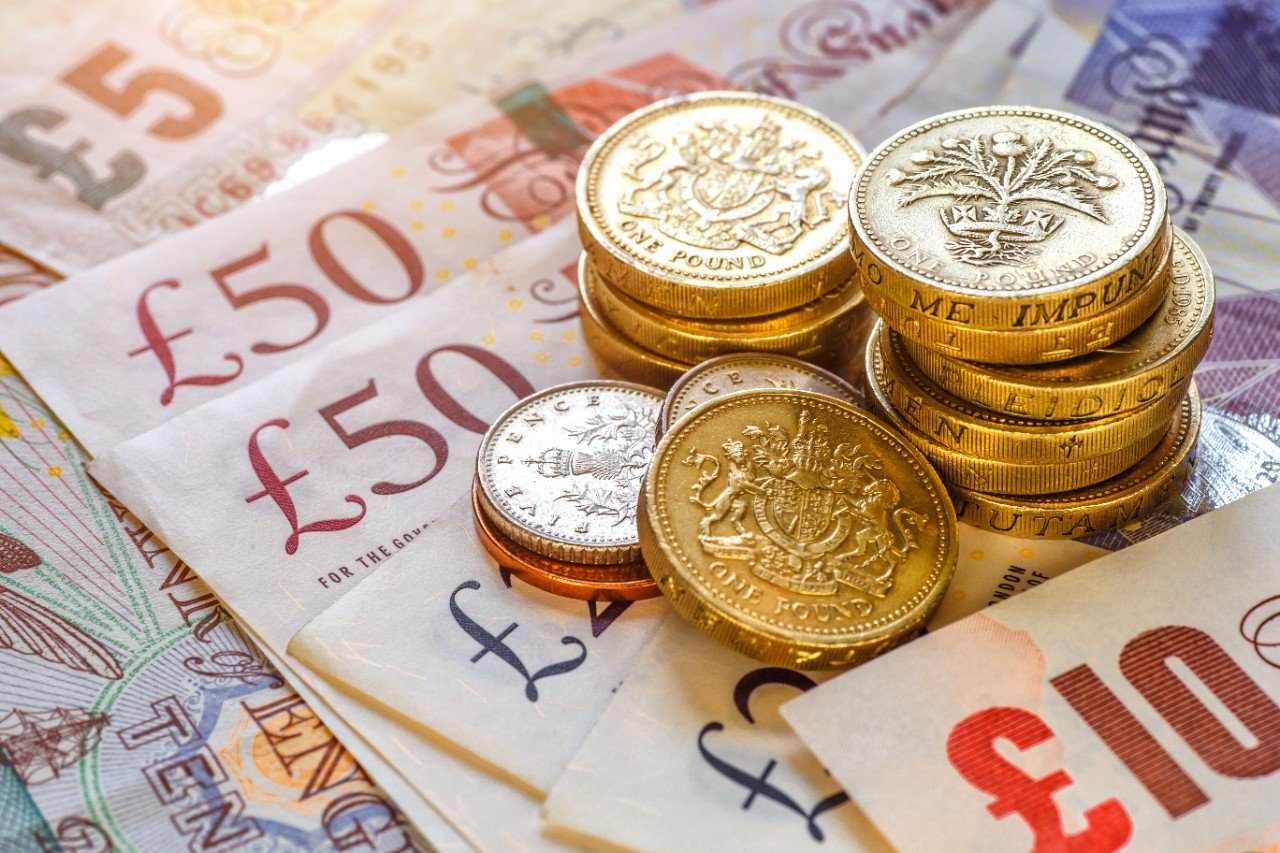- GBP/USD trades marginally higher on the day at around 1.3550.
- The pair corrected lower on hot US producer inflation data on Thursday.
- High-tier data releases from the US could influence GBP/USD’s action heading into the weekend.
GBP/USD finds support and trades marginally higher on the day near 1.3550 after posting losses on Thursday. As markets await the next batch of macroeconomic data releases from the US, the pair’s near-term technical outlook suggests that the bullish bias remains intact.
British Pound PRICE This week
The table below shows the percentage change of British Pound (GBP) against listed major currencies this week. British Pound was the strongest against the New Zealand Dollar.
| USD | EUR | GBP | JPY | CAD | AUD | NZD | CHF | |
|---|---|---|---|---|---|---|---|---|
| USD | -0.26% | -0.73% | -0.43% | 0.34% | 0.20% | 0.54% | -0.36% | |
| EUR | 0.26% | -0.47% | -0.15% | 0.60% | 0.46% | 0.76% | -0.09% | |
| GBP | 0.73% | 0.47% | 0.26% | 1.08% | 0.94% | 1.24% | 0.38% | |
| JPY | 0.43% | 0.15% | -0.26% | 0.79% | 0.67% | 1.04% | 0.21% | |
| CAD | -0.34% | -0.60% | -1.08% | -0.79% | -0.12% | 0.16% | -0.71% | |
| AUD | -0.20% | -0.46% | -0.94% | -0.67% | 0.12% | 0.29% | -0.56% | |
| NZD | -0.54% | -0.76% | -1.24% | -1.04% | -0.16% | -0.29% | -0.85% | |
| CHF | 0.36% | 0.09% | -0.38% | -0.21% | 0.71% | 0.56% | 0.85% |
The heat map shows percentage changes of major currencies against each other. The base currency is picked from the left column, while the quote currency is picked from the top row. For example, if you pick the British Pound from the left column and move along the horizontal line to the US Dollar, the percentage change displayed in the box will represent GBP (base)/USD (quote).
Market participants refrained from continuing to price in three 25 basis points (bps) Federal Reserve rate cuts in 2025 following the hot producer inflation data from the US, helping the US Dollar (USD) gather strength and forcing GBP/USD to stay on the back foot on Thursday.
The US Bureau of Labor Statistics reported that the Producer Price Index (PPI) rose by 3.3% on a yearly basis in July. This reading followed June’s 2.4% increase and came in much higher than analysts’ estimate of 2.5%. Other details of the data showed that the PPI and the core PPI both rose by 0.9% on a monthly basis.
Retail Sales and Industrial Production data for July will be featured in the US economic calendar on Friday. The market reaction to the Retail Sales data is likely to be straightforward and remain short-lived. A positive surprise could support the USD, while a disappointing print could weigh on the currency and help GBP/USD stretch higher.
Later in the day, the University of Michigan (UoM) will publish the preliminary Consumer Sentiment Survey for August. Rather than the headline Consumer Confidence Index data, markets could react to the One-year Inflation Component of the survey. A noticeable increase in this component could allow the USD to gather strength heading into the weekend and force GBP/USD to turn south.
GBP/USD Technical Analysis

The Relative Strength Index (RSI) indicator on the 4-hour chart holds slightly above 60, suggesting that the bullish bias remains intact.
Looking north, the first resistance area could be seen at 1.3590-1.3600 (static level, round level) before 1.3640 (Fibonacci 78.6% retracement of the latest downtrend) and 1.3700 (static level, round level). On the downside, support levels align at 1.3540 (Fibonacci 61.8% retracement), 1.3500 (static level, round level) and 1.3460 (Fibonacci 50% retracement, 200-period SMA).
Pound Sterling FAQs
The Pound Sterling (GBP) is the oldest currency in the world (886 AD) and the official currency of the United Kingdom. It is the fourth most traded unit for foreign exchange (FX) in the world, accounting for 12% of all transactions, averaging $630 billion a day, according to 2022 data.
Its key trading pairs are GBP/USD, also known as ‘Cable’, which accounts for 11% of FX, GBP/JPY, or the ‘Dragon’ as it is known by traders (3%), and EUR/GBP (2%). The Pound Sterling is issued by the Bank of England (BoE).
The single most important factor influencing the value of the Pound Sterling is monetary policy decided by the Bank of England. The BoE bases its decisions on whether it has achieved its primary goal of “price stability” – a steady inflation rate of around 2%. Its primary tool for achieving this is the adjustment of interest rates.
When inflation is too high, the BoE will try to rein it in by raising interest rates, making it more expensive for people and businesses to access credit. This is generally positive for GBP, as higher interest rates make the UK a more attractive place for global investors to park their money.
When inflation falls too low it is a sign economic growth is slowing. In this scenario, the BoE will consider lowering interest rates to cheapen credit so businesses will borrow more to invest in growth-generating projects.
Data releases gauge the health of the economy and can impact the value of the Pound Sterling. Indicators such as GDP, Manufacturing and Services PMIs, and employment can all influence the direction of the GBP.
A strong economy is good for Sterling. Not only does it attract more foreign investment but it may encourage the BoE to put up interest rates, which will directly strengthen GBP. Otherwise, if economic data is weak, the Pound Sterling is likely to fall.
Another significant data release for the Pound Sterling is the Trade Balance. This indicator measures the difference between what a country earns from its exports and what it spends on imports over a given period.
If a country produces highly sought-after exports, its currency will benefit purely from the extra demand created from foreign buyers seeking to purchase these goods. Therefore, a positive net Trade Balance strengthens a currency and vice versa for a negative balance.







